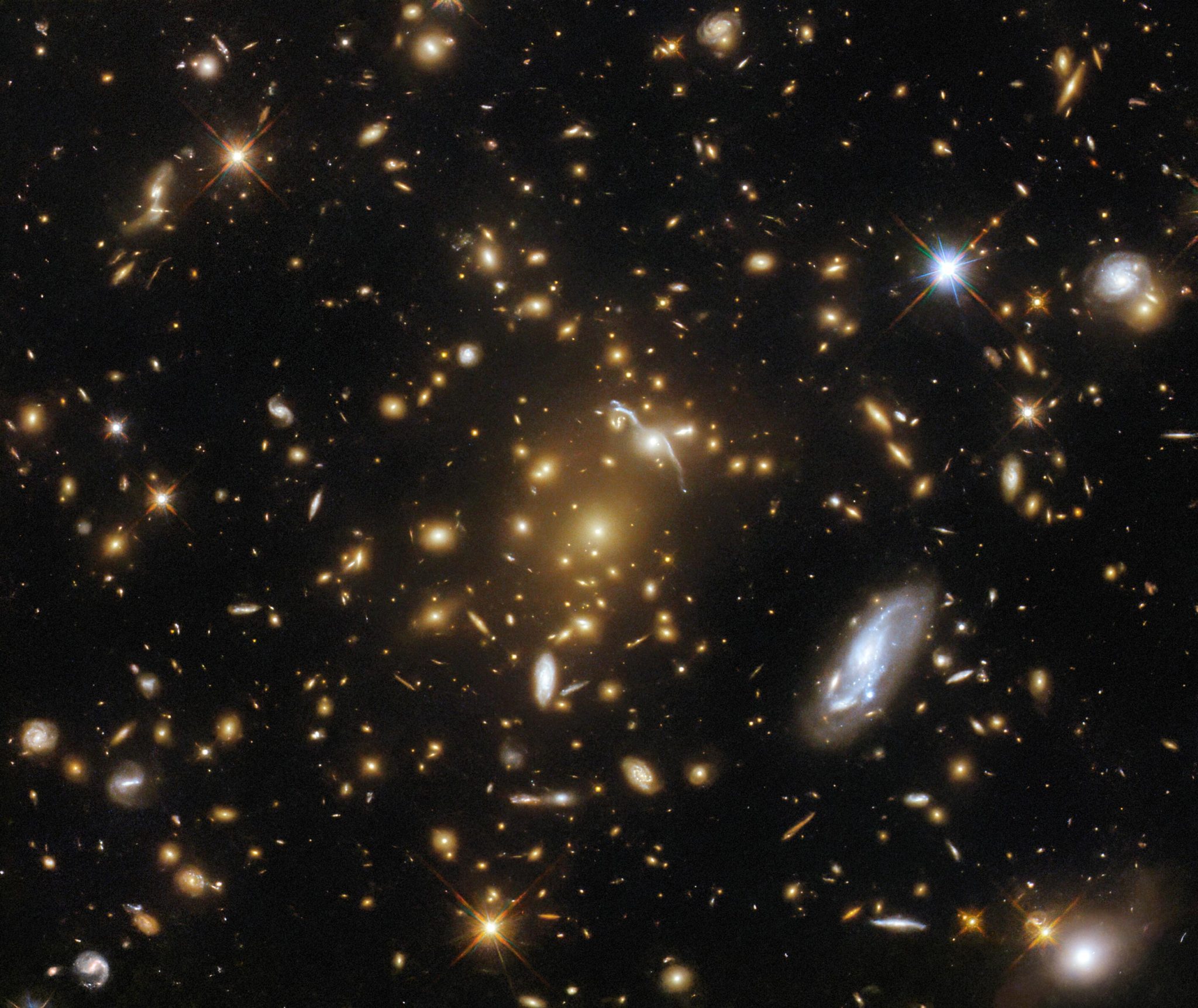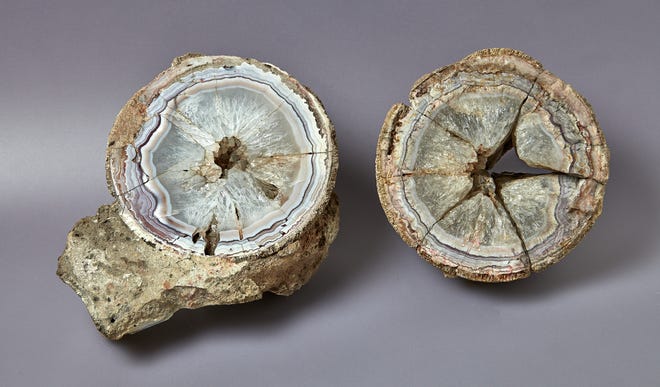
Il telescopio spaziale Hubble ha catturato un’immagine di un enorme ammasso di galassie, eMACS J1823.1+7822, che fornisce informazioni sulla distribuzione della materia oscura e funge da telescopio naturale per lo studio di oggetti distanti. Credito: ESA/Hubble e NASA, H. Ebeling
Questo[{” attribute=””>Hubble Space Telescope image reveals a massive galaxy cluster, eMACS J1823.1+7822, located nine billion light-years away in the constellation Draco. Gravitational lensing caused by the cluster’s mass distorts background galaxies into streaks and arcs of light, offering insights into dark matter distribution.
A vast galaxy cluster lurks in the center of this image from the Hubble Space Telescope. Like a submerged sea monster causing waves on the surface, this cosmic leviathan can be identified by the distortions in spacetime around it. The mass of the cluster has caused the images of background galaxies to be gravitationally lensed; the galaxy cluster has caused a sufficient curvature of spacetime to bend the path of light and cause background galaxies to appear distorted into streaks and arcs of light. A host of other galaxies can be seen surrounding the cluster, and a handful of foreground stars with tell-tale diffraction spikes are scattered throughout the image.
This particular galaxy cluster is called eMACS J1823.1+7822, and lies almost nine billion light-years away in the constellation Draco. It is one of five exceptionally massive galaxy clusters explored by Hubble in the hopes of measuring the strengths of these gravitational lenses and providing insights into the distribution of dark matter in galaxy clusters. Strong gravitational lenses like eMACS J1823.1+7822 can help astronomers study distant galaxies by acting as vast natural telescopes which magnify objects that would otherwise be too faint or distant to resolve.
This multiwavelength image layers data from eight different filters and two different instruments: Hubble’s Advanced Camera for Surveys (ACS) and Wide Field Camera 3 (WFC3). Both instruments have the ability to view astronomical objects in just a small slice of the electromagnetic spectrum using filters, which allow astronomers to image objects at precisely selected wavelengths. The combination of observations at different wavelengths lets astronomers develop a more complete picture of the structure, composition, and behavior of an object than visible light alone would reveal.

“Fan della TV. Risolutore di problemi malvagi. Amante del cibo appassionato. Explorer. Specialista di Internet. Imprenditore dilettante. Fanatico dell’alcol.”




